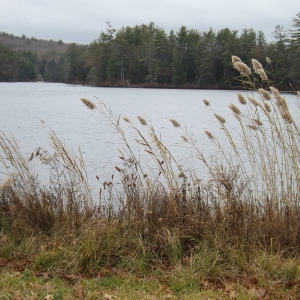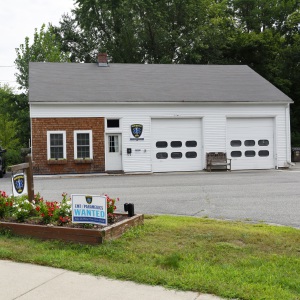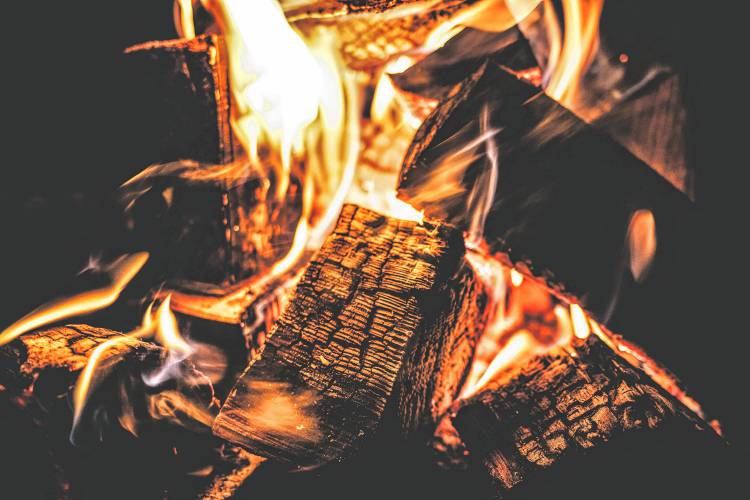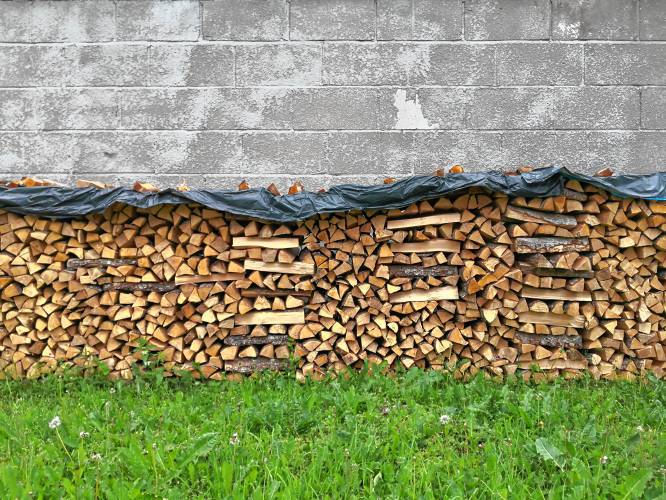How and why does wood burn? A basic scientific explanation to help you better heat your home, build the best fire
| Published: 04-01-2024 3:00 PM |
A significant number of people in this area burn wood to heat their homes, including a number of new arrivals who may have much interest in doing so, but little experience. Accordingly, I thought it would be worthwhile to write about this subject as I have been heating my houses with wood for about 40 years.
The story began a few hundred million years ago when the near magical archaic molecular complex called chlorophyll first appeared either as a series of random molecular interactions, by microbiological metabolic processes, or by the benevolent actions of the Great Spirit who wanted to bring more life to the essentially sterile and bleak primordial planet Earth. As you probably already know, chlorophyll has the ability to use the photonic energy from the sun to combine CO2 and H2O and other goodies into long-chain, carbon-rich molecules (e.g., sugars, starches), and produce O2 as a metabolic end product. Later on, higher plants packaged chlorophyll into intracellular organelles called chloroplasts.
The advent of chlorophyll had a dramatic influence on the subsequent evolution of both plants and animals. Without chlorophyll, neither plant nor animal evolution would have taken place as we presently know it. You see, all animals, including humans, are parasites in the sense that they cannot synthesize their own food, but ultimately depend on plant eaters (herbivores) or animals that eat herbivores (carnivores) for our non-plant based nutrition. Additionally, animals require O2 for their metabolism; a gas that was essentially absent in the primordial atmosphere until photosynthesis put it there. So there is this symbiotic relationship between plants and animals whereby the plants provide the nutrition and O2, and the animals supply some of the CO2 needed for photosynthesis. While the thermodynamic efficiency of photosynthesis is low (1% to 3%), plants and trees make up for this by having many leaves that are chock-full of chloroplasts. Battery-charging photoelectric cells and leaves have functional similarities in that they both use photonic (light) energy to create high-energy chemical bonds that can be stored and used later to (for example) heat our homes.
Fire is the result of a chemical reaction where atoms rearrange themselves irreversibly. In order for fire to take place, three main ingredients must be present: heat, oxygen and fuel. It is a redox (oxygen adding) reaction (e.g., C + O2 becomes CO2 and heat) that produces oxidized, often gaseous products in a mixture called smoke. In order to start a fire, one needs to overcome the “activation energy” of the fuel (around 490 degrees Fahrenheit for wood) at which point the component molecules of wood break apart and recombine, producing volatile gases that combine with oxygen to produce CO2, H2O, heat, and other products (i.e., they burn). Once the wood fire gets going, it hangs up at around 1700 degrees Fahrenheit, which sustains the combustion process until one of the three necessary ingredients is depleted.
Different species of wood can vary widely in the amount of heat they can provide due to their different densities. This is one of the reasons why hardwoods cost more than softwoods. Nevertheless, assuming they are equally dried, all species of firewood yield about the same amount of heat per pound of weight.
Of primary importance to a wood burner is the amount of water in the wood (its “percent moisture”). Freshly cut wood has a moisture content of around 65% while firewood should ideally be dried down to a value below 20% to maximize its heat output. This is because water has a very high “heat of vaporization” value (the amount of heat the liquid water must gain to evaporate, owing to its extensive network of hydrogen bonding between the water molecules). Thus, vaporizing water robs burning wood of some of its otherwise usable heat production, and sends this up the chimney as water vapor. This loss can be quite substantial. For example, green wood with a moisture content of 65% will only provide around 25 Btu (British thermal units)/lb of usable heat, while seasoned wood with a moisture content of 15% will produce about 75 Btu/lb (or 1/3 the amount of wood needed for an equivalent amount of usable heat).
So drying firewood is very important. While difficult to generalize, under typical conditions, wood will dry to 20% moisture at a rate of approximately one-to-two inches from its surface per year. One variable is the species of wood. Split and stacked softwoods require about four-to-six summer months to dry. Hardwoods can take 12 months or more, but can lose a considerable amount of moisture in six months (e.g., wood dried to 45% moisture yields about 40 Btu/lb of usable heat).
Appropriate procedures for seasoning wood center around choosing a good location and configuration for your woodpile, and maximizing the wood’s surface-to-volume ratio. The former is accomplished by putting your woodpile in a location with good air circulation and exposure to the sun, not completely covering your wood with black plastic or whatever, stacking the wood off the ground (put on palates), and buying your wood as early in the preceding season as possible to lengthen its drying time. The latter is accomplished by buying quarter-split (vs. half-split) wood, cross stacking it (vs. parallel stacking), and buying debarked or partially dried wood if available.
Article continues after...
Yesterday's Most Read Articles
 Carol Doucette of Royalston receives $15,000 from Publishers Clearing House
Carol Doucette of Royalston receives $15,000 from Publishers Clearing House
 Athol town-wide cleanup deemed ‘a huge success’ by organizers
Athol town-wide cleanup deemed ‘a huge success’ by organizers
 Byron Coley: Shores Ness for Select Board
Byron Coley: Shores Ness for Select Board
 Franklin Tech student welds ‘artistic’ bench for French King Bridge
Franklin Tech student welds ‘artistic’ bench for French King Bridge
 Partnership hopes to address Lake Ellis stormwater runoff
Partnership hopes to address Lake Ellis stormwater runoff
 State documents show Northfield EMS chief’s paramedic license suspended over failure to transport infant
State documents show Northfield EMS chief’s paramedic license suspended over failure to transport infant
Another important consideration is the thermodynamic efficiency of the wood-burning appliance. While aesthetically charming, open-faced fireplaces are thermodynamic disasters in this regard, having space-heating efficiencies averaging about 10% to 15%. This is why pioneers with their poorly insulated houses and their open fireplaces could go through 20 or more cords of wood and still freeze their butts off in winter. Modern wood stoves, with their precise control of air (O2) do much better, averaging about 80%.
So these are some of the A-B-C’s of firewood burning. Hopefully this article has increased you understanding of burning firewood for space heating.
Enjoy, and keep warm!
Steve Thomas lives in Conway.



